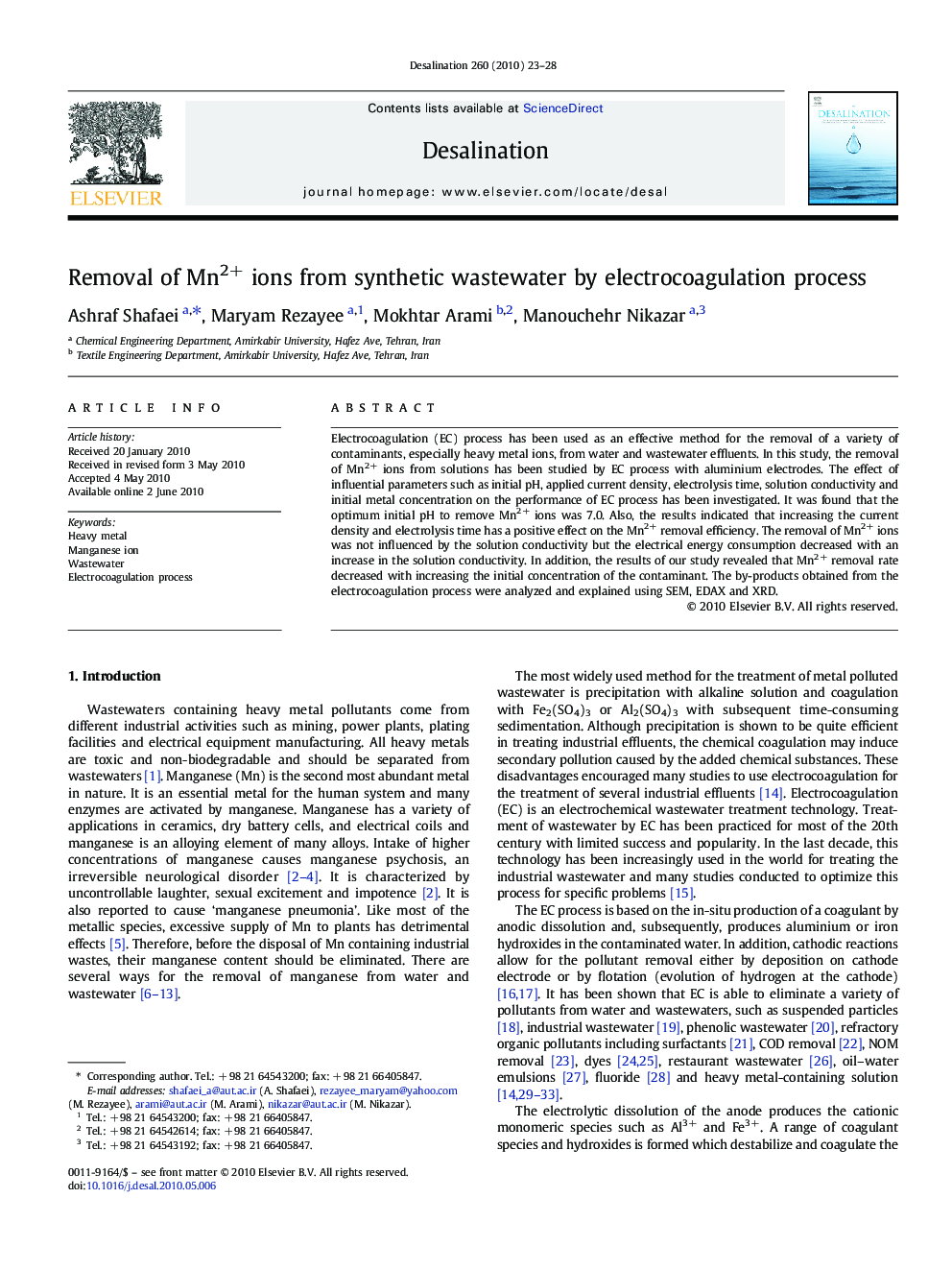| Article ID | Journal | Published Year | Pages | File Type |
|---|---|---|---|---|
| 625643 | Desalination | 2010 | 6 Pages |
Electrocoagulation (EC) process has been used as an effective method for the removal of a variety of contaminants, especially heavy metal ions, from water and wastewater effluents. In this study, the removal of Mn2+ ions from solutions has been studied by EC process with aluminium electrodes. The effect of influential parameters such as initial pH, applied current density, electrolysis time, solution conductivity and initial metal concentration on the performance of EC process has been investigated. It was found that the optimum initial pH to remove Mn2+ ions was 7.0. Also, the results indicated that increasing the current density and electrolysis time has a positive effect on the Mn2+ removal efficiency. The removal of Mn2+ ions was not influenced by the solution conductivity but the electrical energy consumption decreased with an increase in the solution conductivity. In addition, the results of our study revealed that Mn2+ removal rate decreased with increasing the initial concentration of the contaminant. The by-products obtained from the electrocoagulation process were analyzed and explained using SEM, EDAX and XRD.
